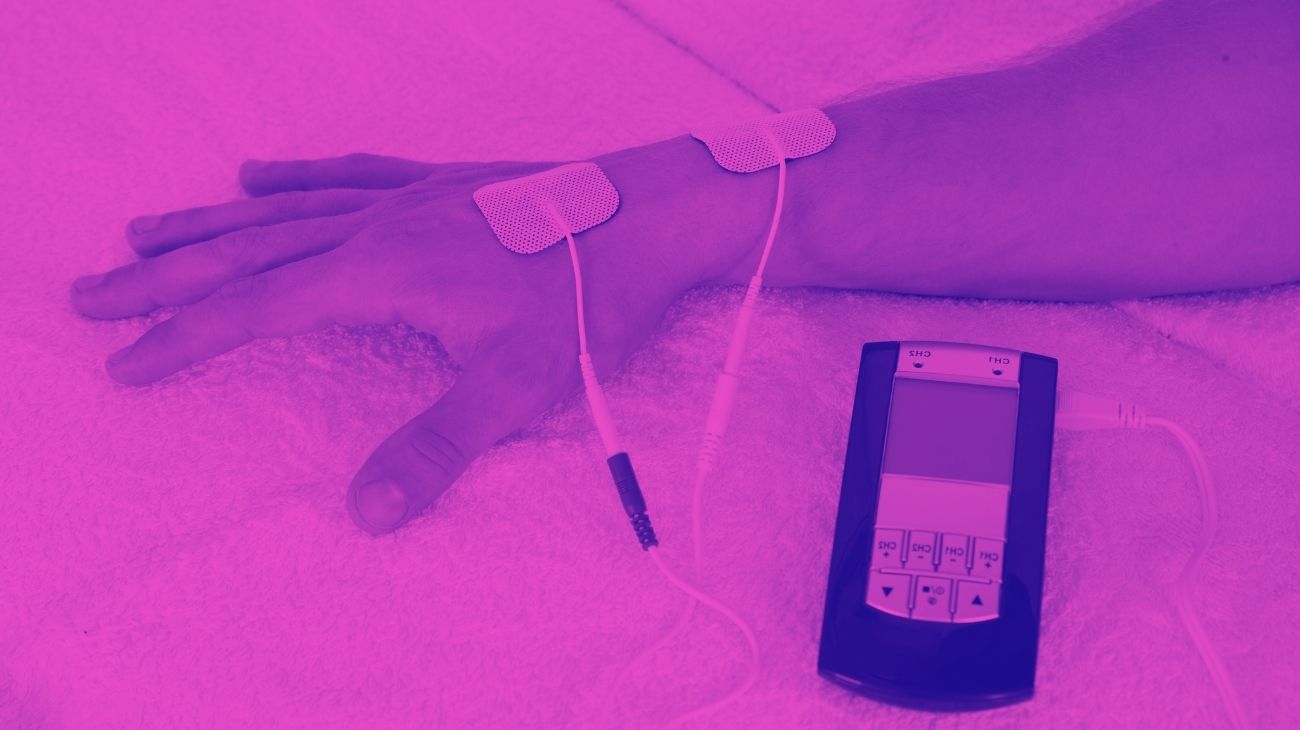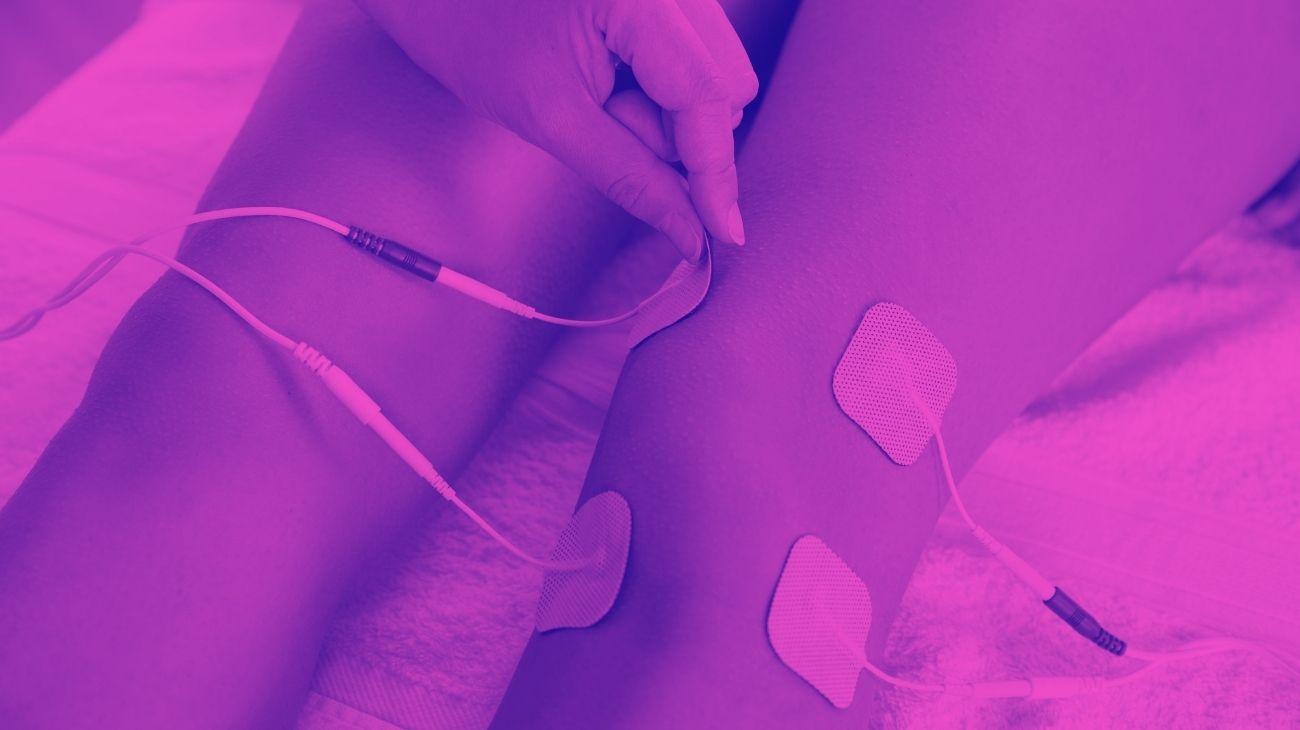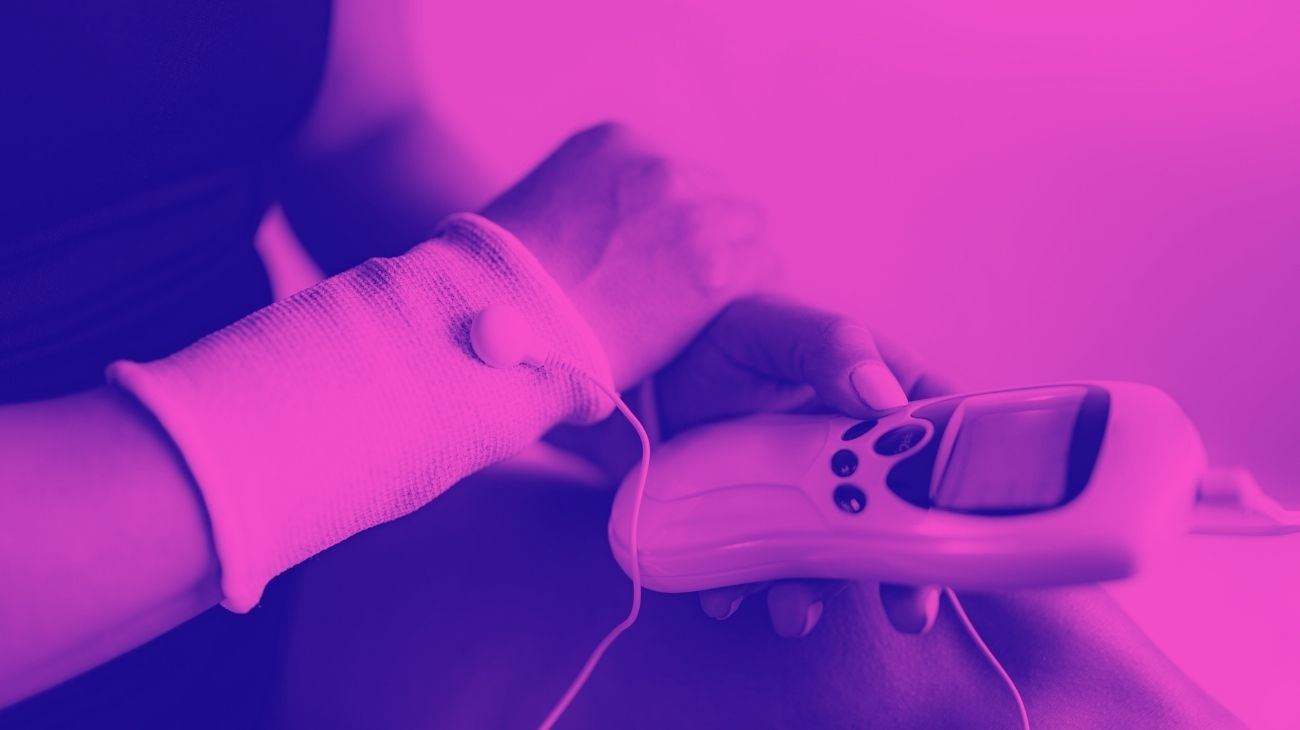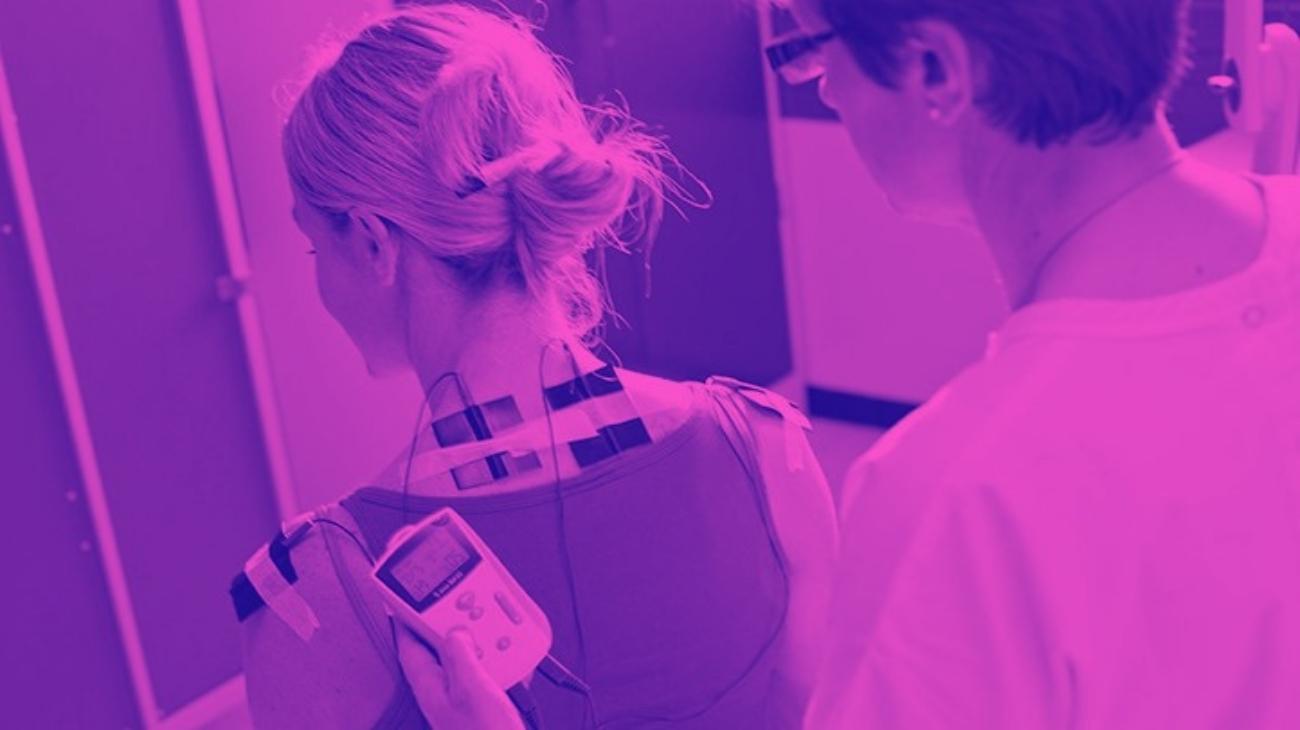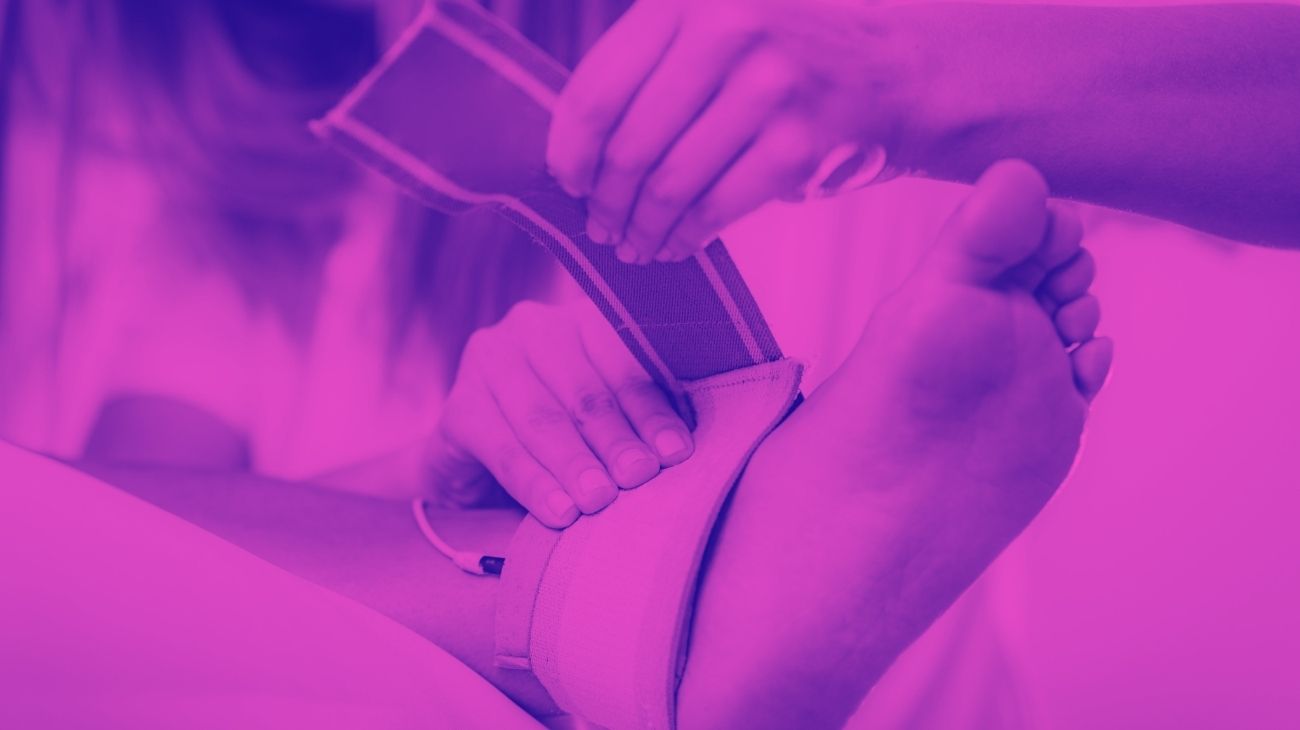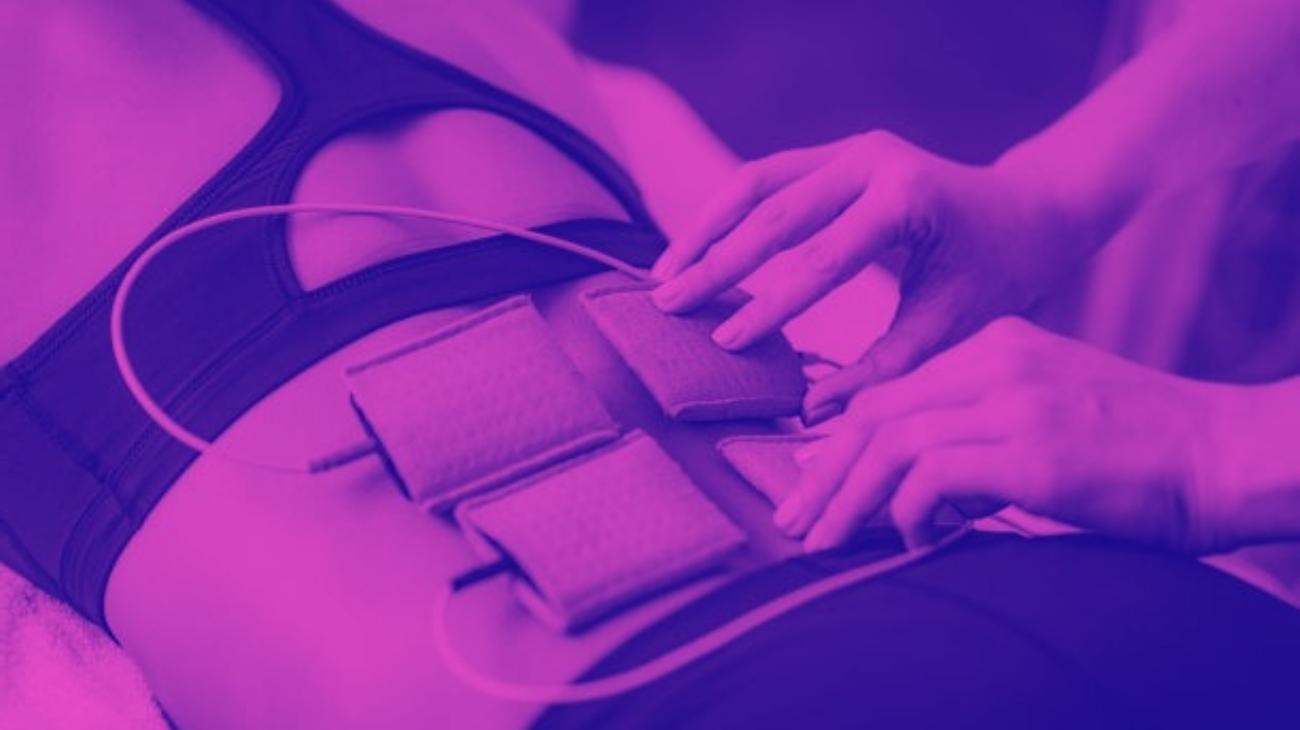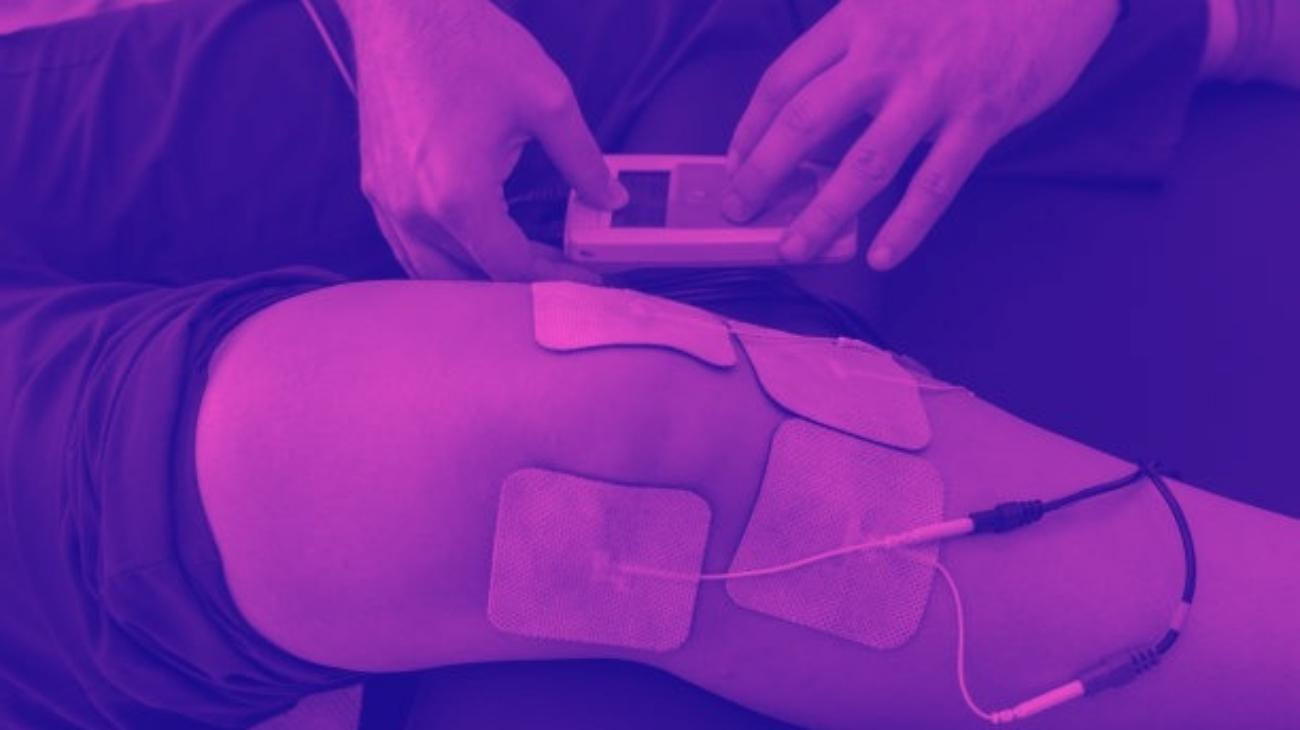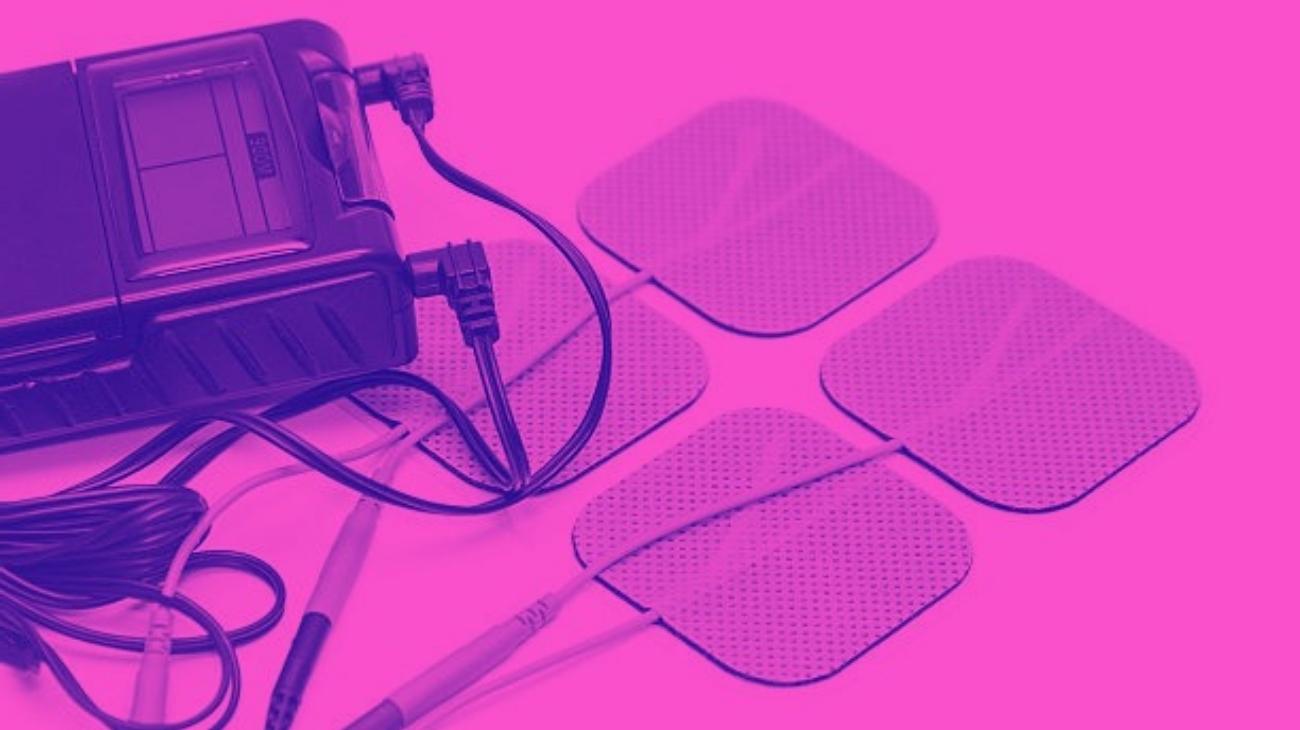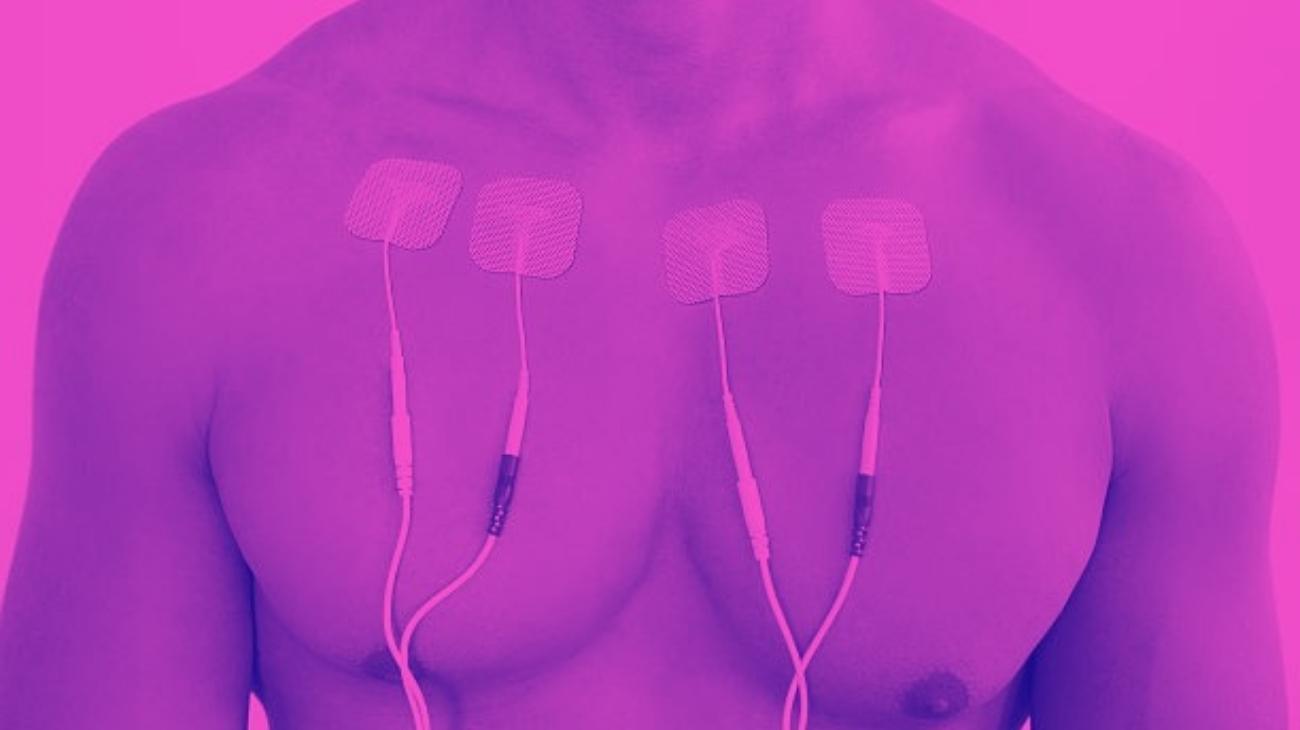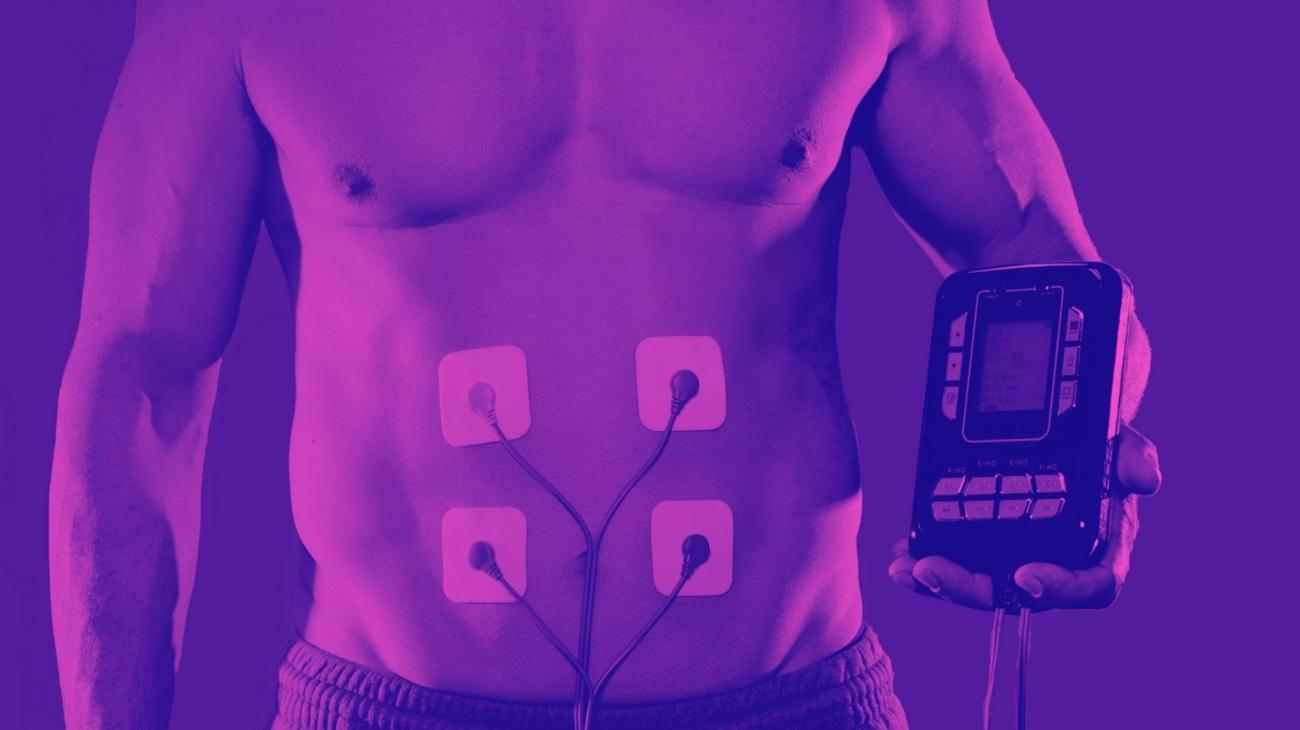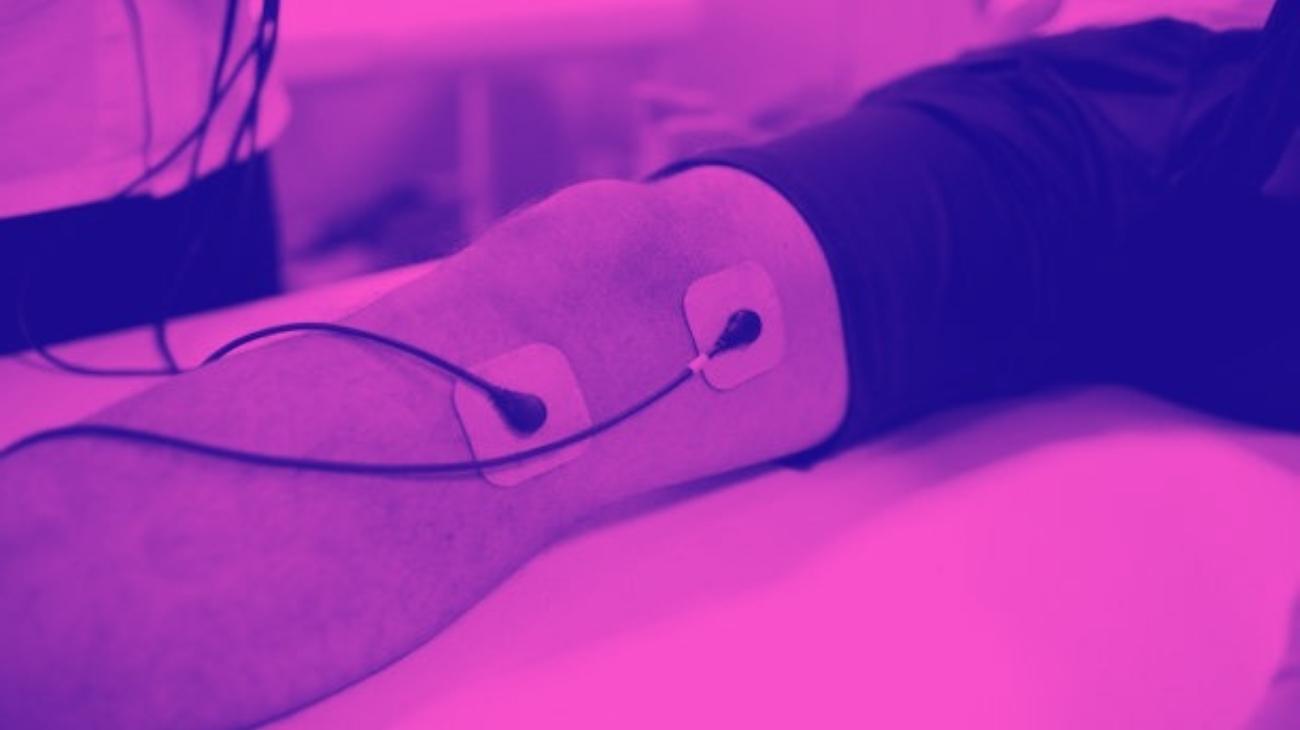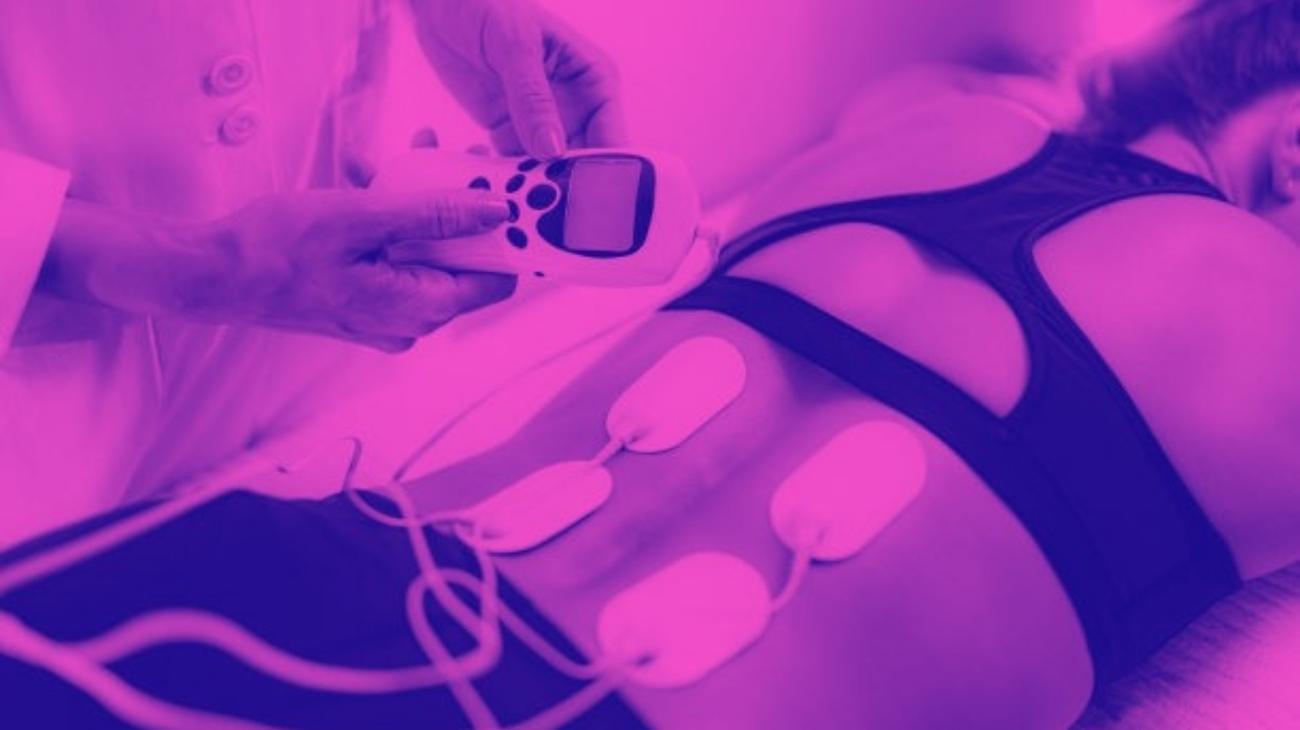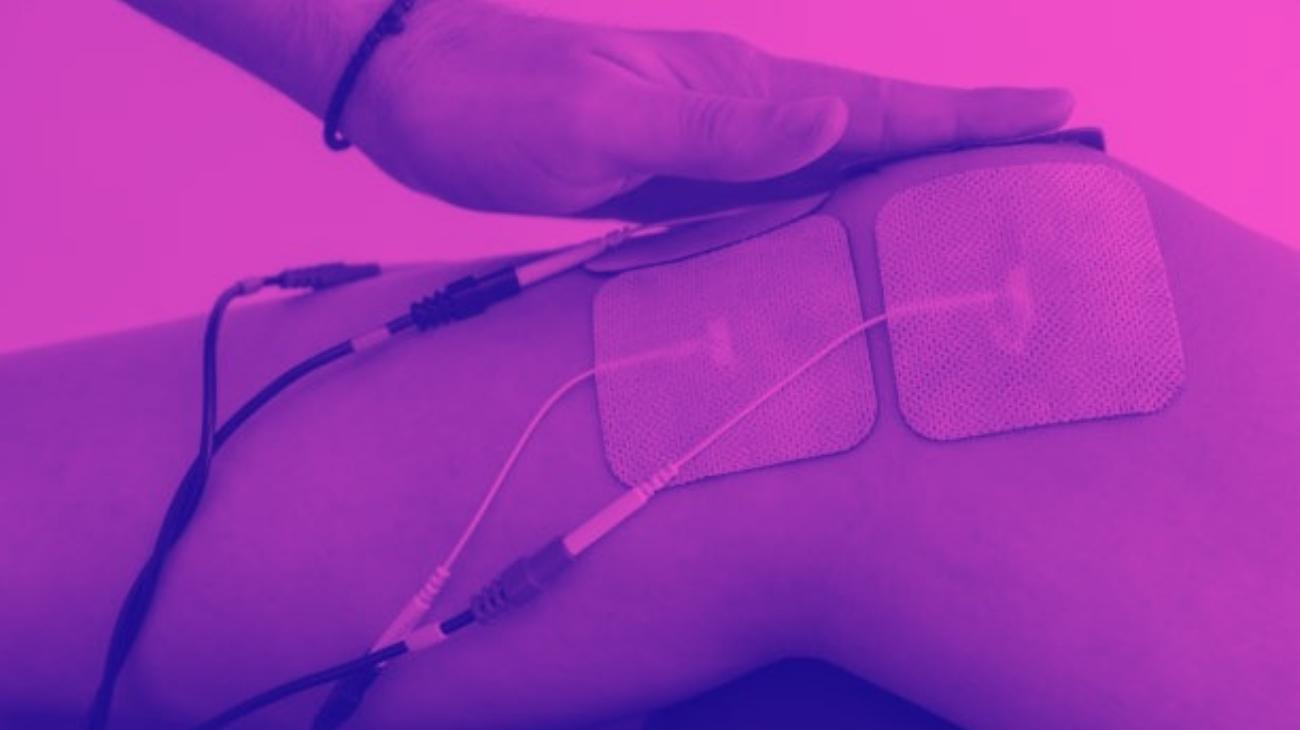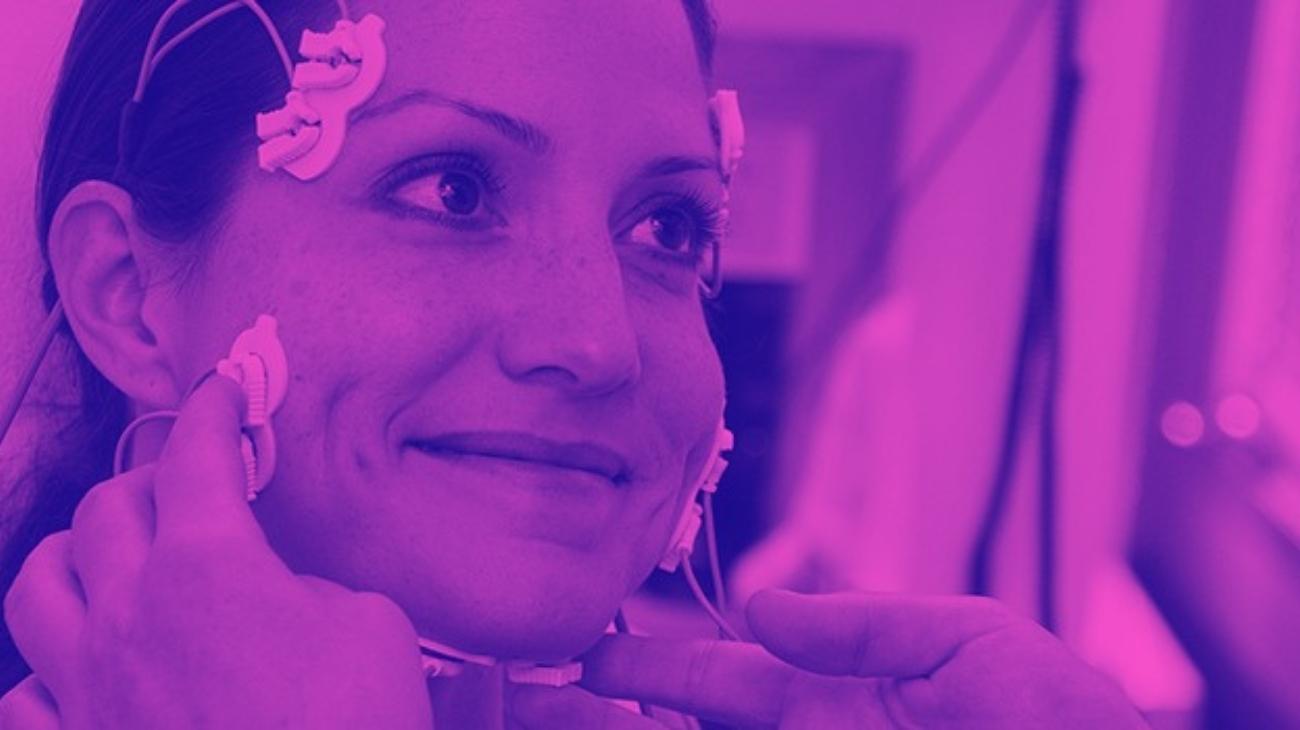- How to use TENS machines to relieve foot fascia pain?
- Best TENS units to treat plantar fasciitis
- How to use EMS electrostimulators to strengthen the muscles of the sole of the foot?
- Best EMS machines to avoid nerve impingement
- Video: How to place electrodes pads on the foot?
- More types of EMS electrostimulators and TENS machines you should know
- What is plantar fasciitis and what are the causes?
- What are the most common types of foot pain?
- Differences between TENS and EMS: Which is better for treating plantar fasciitis?
- Contraindications to the use of electrodes and electrotherapy
The feet can be considered one of the most important extremities of the human body, and in terms of mobility and support of body weight it is possibly the most important, since, regardless of the level of physical activity, the feet support the entire body weight.
For this reason, the soles of the feet and heels are permanently subjected to a considerable amount of stress, which in the long term can lead to injuries such as plantar fasciitis, which can result in difficulty walking due to its symptoms. Below, we will show you how to use TENS and EMS electrotherapy devices to deal with the symptoms of this ailment.
How to use TENS machines to relieve foot fascia pain?
TENS therapy is specially designed to relieve pain by interacting with the pain receptors of the nerves located in the affected area. However, for the effectiveness of the treatment to be adequate, it is necessary to know the ideal position for the placement of the electrodes and the intensity with which to apply the therapy.
Where to place the electrodes?
Plantar fasciitis causes pain due to tension in the fascia, which runs along the entire sole of the foot from the heel to the toes. To treat the pain caused by this ailment, the most indicated position of the pads is as follows:
- External aspect of the gastrocnemius, at the level of the tibial nerve.
- Center of the soleus muscle, where the tibial nerve innervates.
- Sural nerve, on the external lateral aspect of the foot.
- Center of the plantar fascia, in the arch of the foot.
Although TENS therapy correctly applied can cause a considerable sensation of relief, it is necessary to emphasize that it is not a way to cure injuries, but a method to deal with the pain caused by these, in order to make the recovery process more bearable.
What intensity to use?
The ideal intensity of current to treat pain varies depending on the injury and the severity of the ailment. The appropriate intensity for acute pain ranges from 90 to 120 Hz, while chronic pain is treated at a lower intensity of 2 to 10 Hz.
With this in mind, in the particular case of plantar fasciitis, the ideal intensity will depend on how long the pain has been present. For recent conditions, up to three months, the ideal intensity is 115 Hz with a constant frequency that stimulates the application of endorphins.
In case of chronic pain caused by plantar fasciitis, the ideal intensity is 15 Hz in a burst that promotes the release of endorphins and the numbing of the nerve endings of the lateral plantar nerve.
Best TENS units to treat plantar fasciitis
Plantar fasciitis is a particularly annoying ailment that can become disruptive to our way of life by making it difficult to perform tasks as simple as walking. Fortunately, there are a variety of TENS devices designed to relieve the pain in the sole of the foot caused by this condition.
- Type: TENS
- Channels: 2
- Modes/Programs: 9 Programs
- Intensity: 15 Levels
- Wireless: Yes
- Heat therapy: No
- Battery: Rechargeable
- Electrodes: Not specified
- Display: Digital
- Size: Not specified
- Improves blood circulation
- Includes user manual
- Accelerates recovery from sports injuries
- Portable and small size
- Includes carrying bag
- No heat therapy
- No battery life specified
- Size and weight not specified
It has a wide variety of pre-programmed modes of use designed to treat a wide range of ailments. Its compact size makes it incredibly convenient to carry wherever you want, and its specialized long-lasting electrodes can be washed and reused up to 150 times. The purchased package contains 1 OMRON E3 electrostimulator, 1 electrode cable and 1 long-lasting pad.
- Type: TENS
- Channels: -
- Modes/Programs: 3 Programmes
- Intensity: 20 Levels
- Wireless: Yes
- Heat therapy: No
- Battery: 6 AAA Batteries
- Electrodes: 2 Pads
- Display: No display
- Size: 2.36" x 2.08" x 0.7" - 0.09 lbs
- Portable and small size
- Reduces pain symptoms
- Improves blood circulation
- Wireless electrodes
- Improves joint mobility
- Few types of programmes
- Not suitable for muscle hypertrophy
- No display included
It works by means of a remote control system that allows you to increase or reduce the intensity and frequency of the electrical impulses quickly, so that it adapts to the ailments of the treated area. The box includes the remote control to modify the configuration of the device, and 2 adaptable electrodes to place anywhere on the body, together with 6 AAA batteries necessary to operate.
- Type: TENS
- Channels: Dual
- Modes/Programs: 16 Modes
- Intensity: 20 Levels
- Wireless: Yes
- Heat Therapy: No
- Battery: Rechargeable Lithium (up to 10 hours)
- Electrodes: 8 Pads
- Display: Digital
- Size: Not specified
- Improves joint mobility
- Carrying bag included
- Rechargeable battery
- Includes user manual
- Reduces pain symptoms
- Not suitable for muscle hypertrophy
- Does not specify measurements and weight
- Does not include touch screen
The backlit LCD digital display makes the screen clear and easy to read. Supplied with 8 high quality TENS electrode pads. Recharges via computer (USB cable included). Comes with detailed instructions and a TENS user manual containing guidelines for applying the electrodes to the TENS unit. Lightweight and robust.
- Type: TENS
- Channels: Dual
- Modes/Programs: 5 Programs
- Intensity: 15 Levels
- Wireless: Yes
- Heat therapy: No
- Battery: 4 AAA Batteries
- Electrodes: 4 Pads
- Display: Digital
- Size: Not specified
- Includes user manual
- Reduces pain symptoms
- Improves joint mobility
- Portable and small size
- Good quality
- Does not specify measurements and weight
- No carrying bag included
- Few types of programmes
The therapeutic device can be used by two users at the same time or by one user to relieve two locations. Treatment intensity is guaranteed at all times. It has 5 treatment modes (massage, acupuncture, tapping, scraping and cupping) to choose from to relieve headache, leg pain, shoulder pain, joint pain, stomach pain, hip pain and leg pain. Automatic treatment interruption, alarm if the electrode falls off.
- Type: TENS
- Channels: Dual
- Modes/Programs: 3 Modes
- Intensity: Not specified
- Wireless: Yes
- Heat Therapy: No
- Battery: 2 AA Batteries
- Electrodes: 16 Pads
- Display: No display
- Size: Not specified
- Includes user manual
- Reduces pain symptoms
- Improves joint mobility
- Improves blood circulation
- Accelerates recovery from sports injuries
- No intensity levels specified
- Does not specify measurements and weight
- Display not included
Its electrostimulation method allows you to relieve chronic ailments through the application of mild electrical stimuli that inhibit pain signals and stimulate the production of endorphins. The best results are obtained when using this unit for 60 to 90 minutes. The use of this device is widely recommended because it does not interfere with any medical treatment and is completely safe.
How to use EMS electrostimulators to strengthen the muscles of the sole of the foot?
While muscle electrostimulation is not a therapy designed to treat plantar fasciitis, it is a widely used method to prevent this type of injury by strengthening the muscles of the foot.
Where to place the electrodes?
To maximize the effectiveness of muscle training, it is necessary to know the biomechanics of the foot, in order to position the electrodes on the correct muscles or muscle groups, which are:
- Extensor digitorum longus muscle, which originates in the lateral condyle of the tibia and fibula, and inserts on the top of the dorsum of the foot.
- Extensor hallucis longus muscle, which inserts at the metatarsophalangeal joint of the big toe.
- Triceps suralis muscle, the main plantar flexor, which is formed by the soleus and gastrocnemius muscle, whose tendons join to insert in the calcaneus.
- Medial flat muscle, which is intrinsic to the foot and is innervated by the lateral plantar nerve.
What intensity to use?
The appropriate intensity for training with EMS devices varies depending on the area being worked. Specifically in the foot, the goal of training is to improve stability and circulation.
For this, the ideal current varies between 50 and 60 Hz, the frequency at which the greatest muscle contraction is recorded, promoting fiber growth and increased resistance of the triceps suralis and medial plane muscle.
Best EMS machines to avoid nerve impingement
Although the use of muscle electrostimulation is not very common in the foot area, its use is really beneficial to improve balance, strengthen foot support and increase blood supply. For this purpose, the use of dedicated machines is recommended, among which we can mention:
- Type: Combo
- Channels: Dual
- Modes/Programs: 30 Programs
- Intensity: Not specified
- Wireless: Yes
- Heat Therapy: No
- Battery: Rechargeable
- Electrodes: 2 pads
- Display: Digital
- Size: Not specified
- Improves blood circulation
- TENS+EMS combo
- Wireless electrodes
- Accelerates recovery from sports injuries
- Includes user manual
- Does not specify measurements and weight
- Few electrodes
- No intensity levels specified
It uses wireless technology to provide a comfortable massage experience, and makes use of MI technology for faster results, greatly enhancing the effectiveness of the treatment. While it is largely focused on fitness, for which it has 14 programs, it also pays attention to rehabilitation and pain relief, as it also has 10 programs for ailment relief, 4 recovery massage programs, and 2 rehabilitation programs.
- Type: Combo
- Channels: Dual
- Modes/Programs: 16 Modes
- Intensity: 20 Levels
- Wireless: Yes
- Heat Therapy: No
- Battery: Rechargeable Lithium (up to 10 hours)
- Electrodes: 4 Pads
- Display: Digital
- Size: Not specified
- Rechargeable battery
- Accelerates recovery from sports injuries
- Includes user manual
- Reduces pain symptoms
- Improves blood circulation
- Transport bag not included
- Does not specify measurements and weight
- No heat therapy
This combination device is ideal for pain relief and can also be used as a massager to relieve persistent tension. It is a non-pharmacological alternative to relieve pain and tension for people suffering from muscular, chronic, nerve and even some acute pain. For those who wish to tone and firm their muscles, the EMS mode of the device stimulates the muscles and improves their performance. For sedentary people, the device promotes local blood circulation.
- Type: Combo
- Channels: Dual
- Modes/Programs: 25 Modes
- Intensity: 50 Levels
- Wireless: Yes
- Heat Therapy: No
- Battery: Rechargeable Lithium (up to 10 hours)
- Electrodes: 10 Pads
- Display: Digital
- Size: Not specified
- Rechargeable battery
- Prevents muscle atrophy
- Portable and small size
- Improves joint mobility
- TENS+EMS Combo
- Does not specify dimensions and weight
- Transport bag not included
- Touch screen not included
The 50-level intensity allows you to explore for another unique experience, while the preset timer can be easily adjusted from 5 to 60 minutes. Safe enough to relax at home or in the office. Hydrogel with multi-layer technology, reusable 70 to 110 times when used correctly. Built-in rechargeable lithium battery, 10 hours continuous use after a full charge with USB cable.
- Type: Combo
- Channels: 2
- Modes/Programs: 10 Programs
- Intensity: 20 Levels
- Wireless: No
- Heat Therapy: No
- Battery: Rechargeable Lithium
- Electrodes: 8 Pads
- Display: LCD
- Size: 8,3cm x 6,3cm x 0,5cm
- Reduces pain symptoms
- With adjustable timer
- Accelerates recovery from sports injuries
- Includes carrying bag
- Improves blood circulation
- No battery life specified
- No weight specified
- No heat therapy
It features 10 pre-programmed massage modes and 20 intensity levels that target different types of ailments and injuries. It has a session timer function that allows you to adjust the duration of the sessions and has a lithium battery that allows you to apply therapy for more than 20 consecutive hours.
- Type: Combo
- Channels: 2
- Modes/Programs: 24 Modes
- Intensity: Not specified
- Wireless: No
- Heat Therapy: No
- Battery: Rechargeable Lithium (up to 20 hours)
- Electrodes: 6 electrodes
- Display: LCD
- Size: Not specified
- Includes user manual
- Reduces pain symptoms
- Long battery life (up to 20 hours)
- Portable and small size
- Good quality
- Few intensity levels
- Does not specify size and weight
- Not suitable for muscle hypertrophy
It includes 24 modes of use that apply different types of massages focused on dealing with particular ailments. Its lithium battery allows continuous use for more than 20 hours, and has a session timer that can be set from 10 to 60 minutes. The purchase includes 1 mini Plus 24 electro stimulator, 1 carrying case, 6 large electrodes, 2 guide cables, 1 user manual and 1 USB charger.
Video: How to place electrodes pads on the foot?
Electrodes for feet
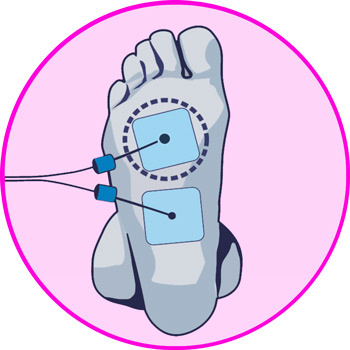
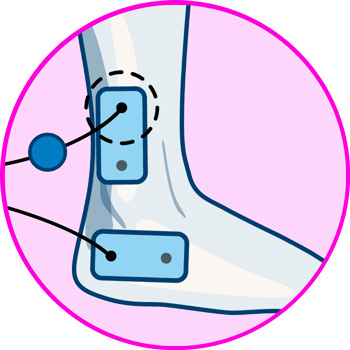
More types of EMS electrostimulators and TENS machines you should know
What is plantar fasciitis and what are the causes?
Plantar fasciitis is an ailment of the sole of the foot and heel caused by inflammation of the plantar fascia, a band of tissue that connects the heel bone to the toes across the sole. The cause of this is not a particular condition, but a set of factors that increase the risk of suffering it, among which we can highlight the following:
- Age: the wear and tear of the tissue increases the possibility of suffering plantar fasciitis, especially between 40 and 60 years of age.
- Exercise: Certain physical activities that put pressure on the heel and attached tissues can lead to plantar fasciitis. For example, long distance running, dancing or ballet.
- Foot mechanics: certain conditions such as flat feet, a too high arch or even the way you walk can put excessive stress on the plantar fascia.
- Obesity: excess weight puts excessive pressure on the ankles, feet and sole, facilitating the onset of plantar fasciitis.
- Too much time on your feet: professions that require spending most of the time on your feet tend to have a high rate of employees with plantar fasciitis, thanks to the stress exerted during working hours.
What are the most common types of foot pain?
The main function of the feet is to balance the body and support its weight during movement, so they are usually subjected to a considerable amount of pressure that can vary depending on some factors. This stress is usually a fairly common cause of wear and tear on tendons, ligaments and other tissues, which can lead to a wide range of ailments.
Among the main causes of foot pain, we can highlight the following:
- Achilles tendonitis: this is an injury to the Achilles tendon caused by overuse, so it commonly occurs in runners and middle-aged people who play sports.
- Bunions: is a bony protrusion formed in the metatarsophalangeal joint, which occurs when one of the bones becomes misaligned causing the tip of the big toe to point toward the other toes and the base of the big toe to become inflamed and red.
- Bursitis: is a disorder that causes inflammation in the joints. Although it occurs most often in the elbows and shoulders, it can also occur in the heel and the base of the big toe.
- Gout: is a form of arthritis caused by uric acid buildup that usually causes swelling, tenderness and pain in the big toe.
- Flat feet: is a condition that causes flattening of the arch of the foot, and although the sensation of pain is not usually present, there are cases in which flat feet can cause pain in the arch or heel area, which can intensify with physical activity.
- Foot fracture: is an injury to the foot bones of varying severity that can occur from a blunt impact on the foot. It can be caused by accidents or falls.
- Ingrown toenail: is a very painful condition that occurs when nail growth causes the nail to bury into soft flesh. It usually occurs on the big toe, and can cause inflammation, pain, redness and, in some cases, infection.
Differences between TENS and EMS: Which is better for treating plantar fasciitis?
TENS and EMS electrostimulation devices work in a very similar way, since they both work through electrical impulses. However, they are not intended for the same function, as their effect is focused on completely different areas.
Transcutaneous Electrical Nerve Stimulation, or TENS for short, has the following characteristics:
- It focuses on treating symptoms of injuries that cause pain.
- It uses low intensity electrical impulses (1 Hz to 250 Hz).
- They interact with nerve endings in the sole of the foot, located in the medial plantar branch and lateral plantar branch of the posterior tibial nerve.
- Its objective is to mitigate the sensation of pain and generate a feeling of relief in the patient.
In contrast, electrical muscle stimulation, or EMS (Electrical Muscle Stimulation), while having similar characteristics, has important differences. These are the following:
- It uses medium to high intensity electrical impulses, ranging from 70 to 150 Hz.
- Itcauses muscle contractions that lead to an increase in muscle mass, strength and elasticity.
- It is widely used in the rehabilitation of muscle injuries and physical training.
- It is a method of physical training and rehabilitation, not a treatment for pain.
With this information, it is clear that the ideal therapy for pain caused by plantar fasciitis is TENS transcutaneous electrical nerve stimulation, thanks to its interaction with the nerve endings in the sole of the foot to mitigate the sensation of pain caused by the injury to the plantar fascia. And although there is a certain amount of muscle tissue in the plantar fascia area, the effect of TENS is the most recommended for pain in this area.
EMS is not an effective method for dealing with pain caused by plantar fasciitis, because its effect is more focused on the contraction of muscles and muscle groups, not on the interaction with nerves, so using EMS therapy with injuries such as plantar fasciitis may increase the sensation of pain.











